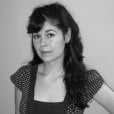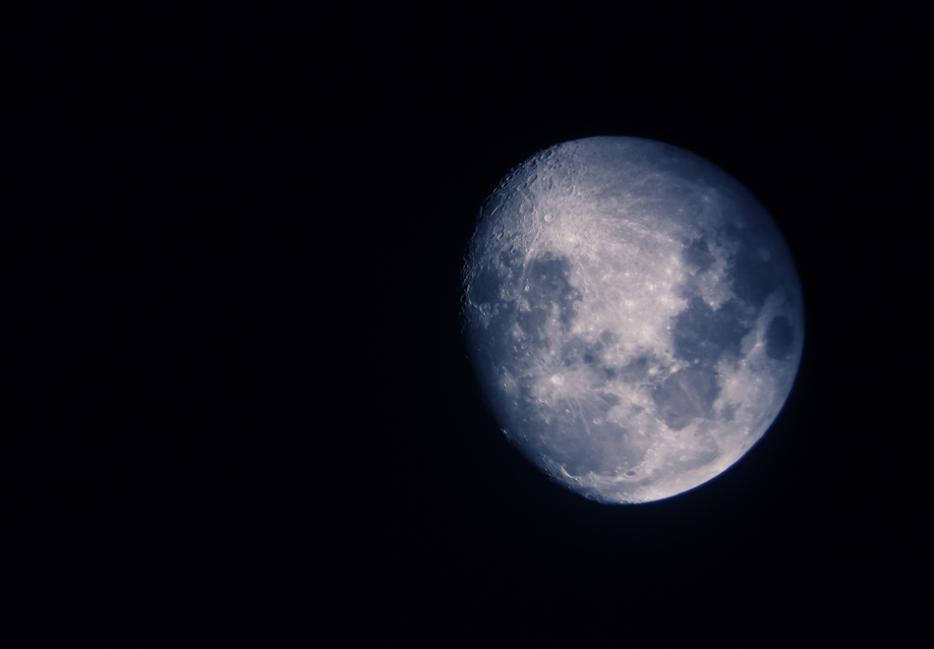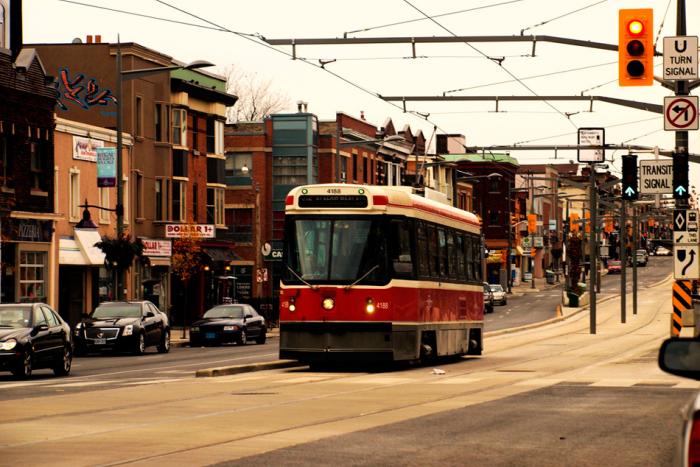In front of me on the coffee table right now are the following blues: Dollar Store fake feather blue, Easter egg in a glass bowl blue, 2014 agenda blue, and cover of Adam Dickinson’s The Polymers blue. Sitting on top of the bookshelf to my left, there’s fake Delftware vase blue, friend’s album cover blue, little bird on a Mexican candlestick blue, and balloon in a photograph blue. I can see into the kitchen, where I find another taxonomy of blues: sky in a tiny painting of Rio de Janeiro blue, paper flower blue, Bienvenue à Québec card made by third-graders at a religious school for girls blue.
Colours drive philosophers crazy. Shades of colour are like thoughts but less utterable—for basic facts of the physical world, they seem to live in the mind or the eye. We teach colour words to toddlers but have to ask each other if these pants are black or navy. Other qualities—height, weight, shape, texture—seem more firmly hinged to an object, but paint a cow blue and it’s a blue cow. William H. Gass wrote a book in 1976 which has just been reissued; it’s called On Being Blue: A Philosophical Inquiry, and is nominally about the colour blue but mostly about language. “Blue material,” as he calls it, is often sexual (like blue movies), and he mulls over the “major motives” for introducing blue into a text, from the perspectives of the writer, the reader, and the work itself.
A question that has been bothering philosophers, as well as linguists, psychologists, neuroscientists, and paint manufacturers, is whether colour is language or exists separately from it. For example, blue. If Homer were writing about my coffee table, everything named in the first paragraph would be wine-dark, or misty, or glancing-white. Similarly the Hebrew God, which explains why there are so few balloons in the Bible. The Vedas and the Icelandic sagas are also short on blue, by which I mean they never mention it.
In fact, as the philologist Lazarus Geiger noticed in the 1880s, no one in the ancient world said anything about blue, because ancient Hebrew, Greek, Icelandic, and Sanskrit literally had no words for it. The Greek word kuáneos, the precursor to Latin cyaneus and our cyan for blue, seems to have breezily referred to anything dark or black, and glaukós, another blue candidate, could also mean green. In the fourth century BC, Plato said the primary colours were black, red, white, and “brilliant.”
Some languages still don’t have a word earmarked blue. In Vietnamese, trees and the sky are variations on the same theme, and green and blue share a word in Japanese, Thai, and a Namibian language called Otjihimba. It’s possible that the absence of a specific word for blue reveals less about how a culture sees blue than it does about how that culture sees words. English is known as a low-context culture—we employ different words to convey different meanings. A language like Vietnamese is high-context; meaning resides in the situation as well as simply the words.
Linguists have found that, for languages that do evolve different words for colour designations, blue is generally among the last to claim its own. The first colour distinctions are black/white (or dark/light), and the next colour is red. Then usually yellow, then green, and then blue, clocking in just before brown, pink, purple, and orange. One theory on why blue differentiates itself so late is that people don’t need a word for blue until they start to make it. Blue dye was scarce in the ancient world—you needed a sea snail harvested after the rising of the Dog Star, or an indigo plant sailed in from India, or the leaves of the Asp of Jerusalem, also called woad.
Is language, therefore, necessary to consolidate an idea of a colour? A paper published in January of 2013 in the journal Developmental Science outlines the story up to now: Russians, who have separate words for light blue and dark blue, are better than English-speakers at distinguishing between shades of blue; also, colour perception in babies seems to engage the brain’s right hemisphere, but as language is learned it switches over to the left hemisphere.
Colours drive philosophers crazy. Shades of colour are like thoughts but less utterable—for basic facts of the physical world, they seem to live in the mind or the eye. We teach colour words to toddlers but have to ask each other if these pants are black or navy.
This would seem to indicate that language is what divides colours into categories, but the paper’s authors, a Dutch team of psycholinguists led by Ozge Ozturk, beg to differ. They devised an experiment in which eight-month-old babies were shown blue circles on blue backgrounds and blue circles on green backgrounds, as well as green circles on green backgrounds and blue circles on purple backgrounds. The researchers used eye-tracking devices to measure how long it took for the infants to focus on the circles, and found that babies were quicker to notice the circles when the background was of a different colour category. A dark green circle on a light green background didn’t attract their attention in the same way as a blue circle on a purple background. Therefore, it couldn’t simply be contrast that mattered to babies; blue and purple were different colours to them before they had words for blue or purple.
Maybe blue’s fashionably late entrance to language is why so many writers are still fixated upon it. Gass is not the only one to dedicate a book to blue: Michel Pastoureau traces its changing meaning in Blue: The History of a Colour, and Maggie Nelson declares in Bluets, “Suppose I were to begin by saying that I had fallen in love with a color.” If in the ancient world few things were blue, now blue things, both literal and metaphorical, proliferate, as we see from a few dips into Gass’ first sentence:
Blue pencils, blue noses, blue movies, laws, blue legs and stockings, the language of birds, bees, and flowers as sung by longshoremen...Russian cats and oysters, a withheld of imprisoned breath, the blue they say that diamonds have, deep holes in the ocean and the blazers which English athletes earn that gentlemen may wear...Nova Scotians, cyanosis, hair rinse, bluing, bleach; the rare blue dahlia like that blue moon shrewd things happen only once in... Confederate money, the shaded slopes of clouds and mountains, and so the constantly increasing absentness of Heaven...through a scrambling of accidents, blue has become their color, just as it’s stood for fidelity.
There’s a neighbourliness to this list of blue, like a mixed-income housing project in which people who do and think and mean different things in the grander social order can be classed together—now they have something in common. Blue is a hometown you can move to.
Here’s a project for you: if the Greeks saw blue without a name for it, there is a name for a blue that no one can see: Stygian blue, which belongs to a theoretical classification called, alternately, impossible colours, forbidden colours, and chimerical colours. In 2005, philosopher Paul Churchland explained how you might try to catch it. First stare unflinchingly at a circle of blindingly saturated yellow on a grey sheet. By fatiguing your eye’s receptivity to the wavelength we use for yellow, you produce an afterimage of blue. Stare at a black sheet, and your eye falls into darkest, darkest underworld blue of the River Styx. Look inside it long enough, and you’ll see Homer with a finger to his lips.
Image via





